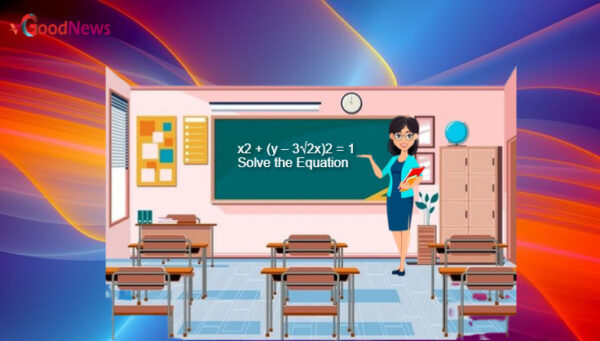Unraveling the Equation x² + (y – 3√2x)² = 1: A Mathematical Exploration
The equation x² + (y – 3√2x)² = 1 captivates mathematicians and enthusiasts with its blend of quadratic and radical expressions. This article delves into its essence, solution, graphical depiction, applications, and its relevance in modern mathematics.
Understanding the Equation x² + (y – 3√2x)² = 1
At its core, x² + (y – 3√2x)² = 1 is a depiction of a conic section, specifically an ellipse—a flattened circle that holds intricate mathematical properties.
Deconstructing the Equation
Before diving into solving it, let’s dissect its components:
- x²: Represents the square of x.
- (y – 3√2x)²: Combines y with the radical expression 3 times the square root of 2x, all squared.
- 1: A constant on the right side of the equation.
Deciphering the Solution
To tackle the equation systematically, let’s break down the solution process into manageable steps.
Step-by-Step Approach
Solving for x:
- Step 1: Move (y – 3√2x)² to the other side: x² = 1 – (y – 3√2x)²
- Step 2: Take the square root of both sides: √x² = √(1 – (y – 3√2x)²)
- Step 3: |x| = √(1 – (y – 3√2x)²)
- Step 4: Squaring both sides: x² = 1 – (y – 3√2x)²
- Step 5: Expanding and simplifying: 10x² – 6√2xy + y² – 1 = 0
Solving for y:
- A similar process is followed, isolating (y – 3√2x)² and then solving for y.
Graphical Representation
Visualizing the Equation
Plotting x² + (y – 3√2x)² = 1 allows us to grasp its shape—an ellipse—on a coordinate plane. This graphical representation unveils crucial insights into its properties.
Analyzing the Graph
The ellipse’s center lies at (0, 0), and its major and minor axes are determined by the coefficients of x² and y². Symmetry along the x and y-axes is evident due to the squared terms.
Applications of the Equation
Real-World Scenarios
From modeling celestial orbits in astronomy to describing physical phenomena in physics and engineering, the equation finds diverse applications.
Advantages and Limitations
Pros:
- Represents an ellipse, a fundamental geometric shape.
Cons:
- Limited to specific curve types, unable to depict all shapes.
Mathematical Concepts
Quadratic Equations: x² + (y – 3√2x)² = 1 belongs to this category, with the highest variable power being two.
Radical Expressions: The presence of 3√2x adds complexity, demanding specialized solving techniques.
Historical Significance
Rooted in historical mathematical advancements, the equation’s exploration reflects the contributions of past mathematicians.
Importance in Modern Mathematics
As a captivating conic section with practical implications, x² + (y – 3√2x)² = 1 occupies a significant position in contemporary mathematics.
Conclusion
In essence, x² + (y – 3√2x)² = 1 intricately intertwines quadratic and radical elements to depict an ellipse. Its solutions, graphical depiction, and real-world applications underscore its relevance in both mathematics and beyond.

